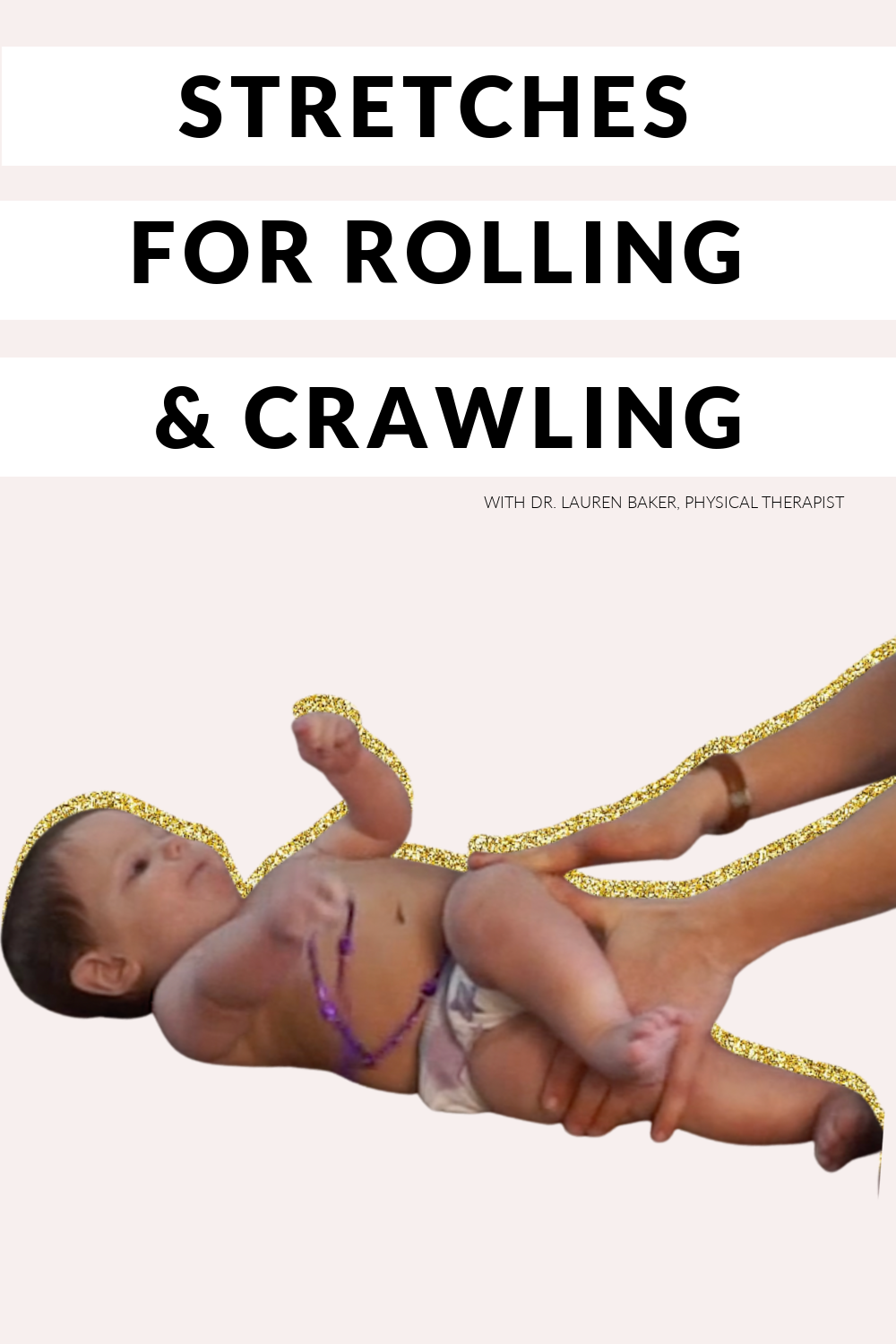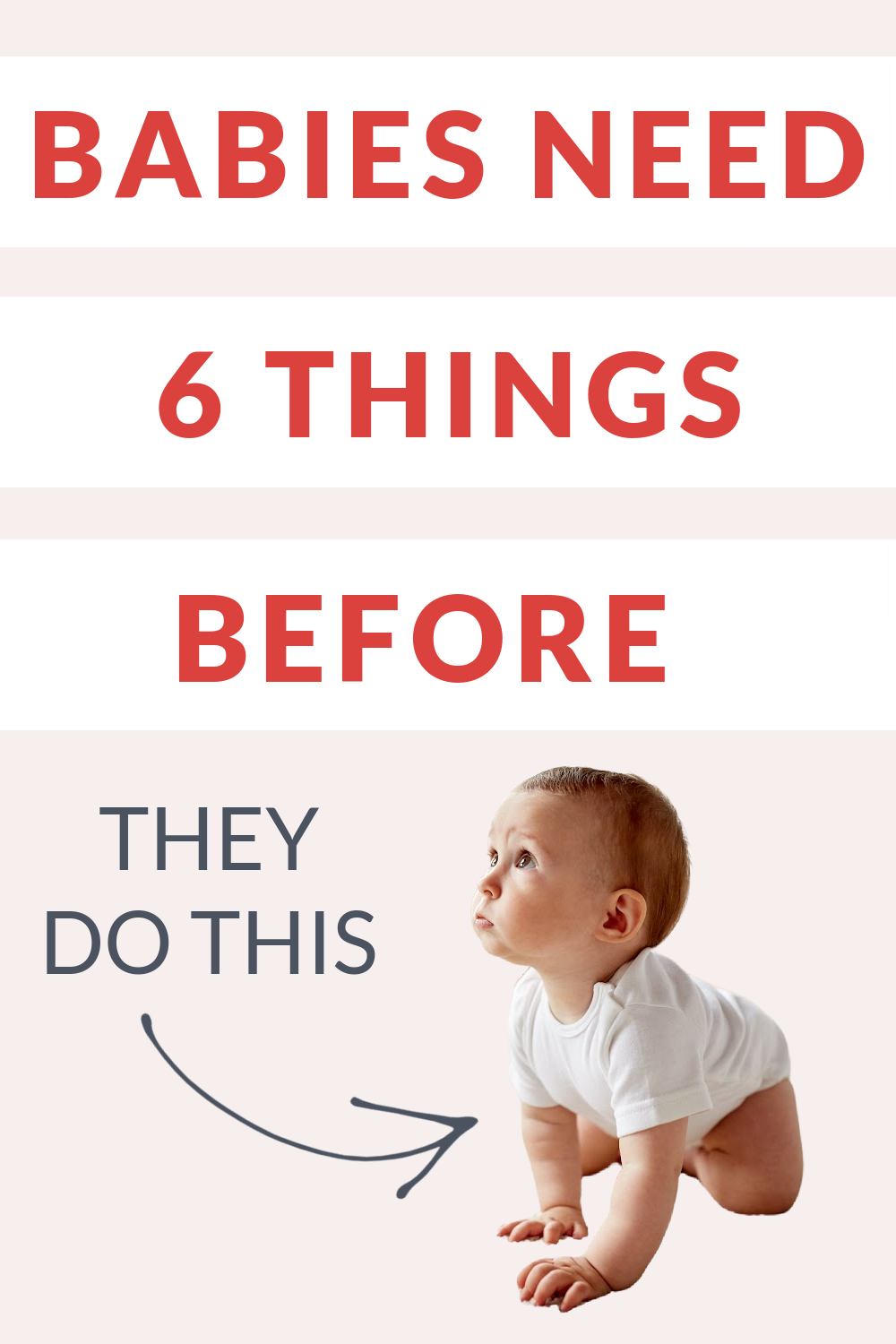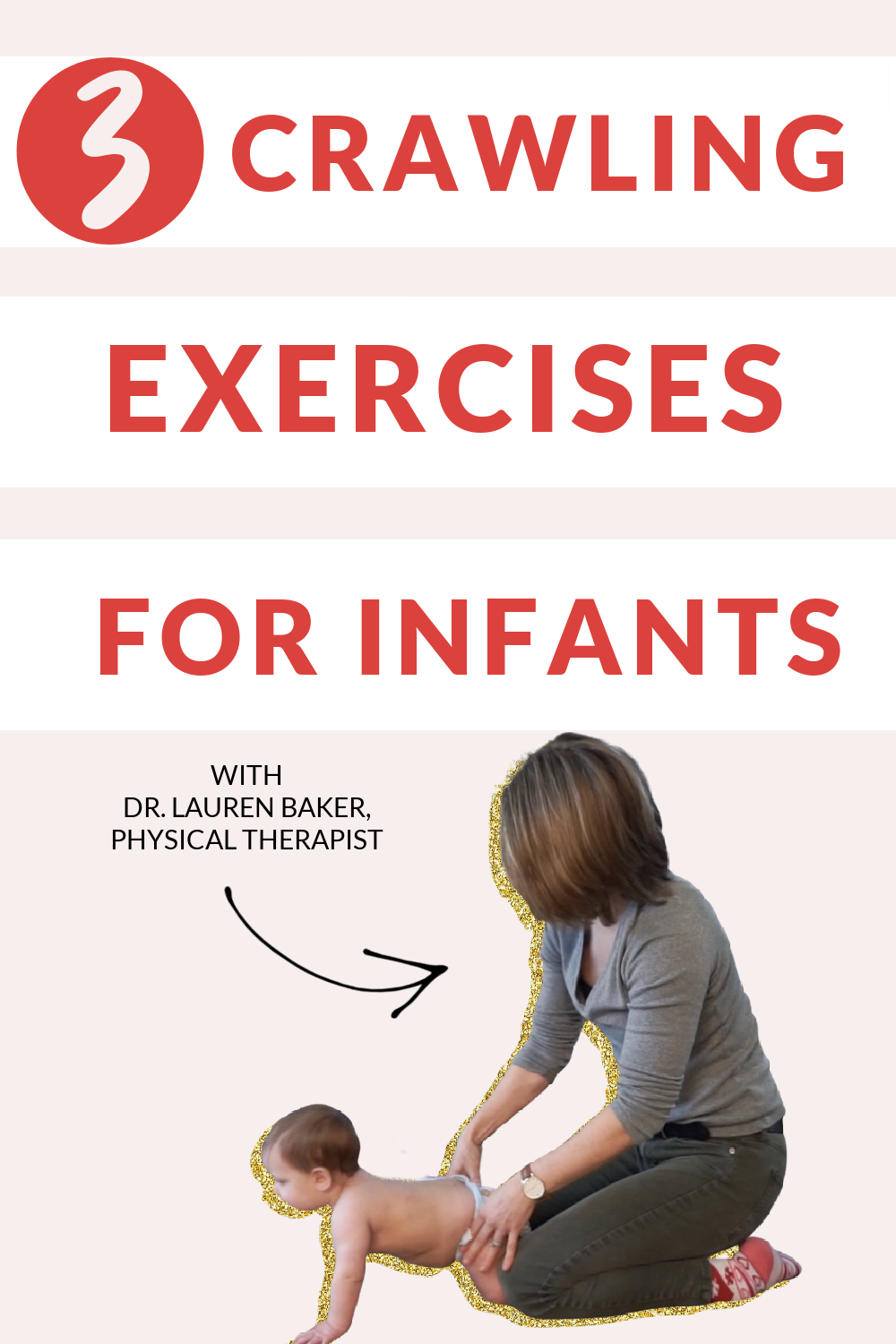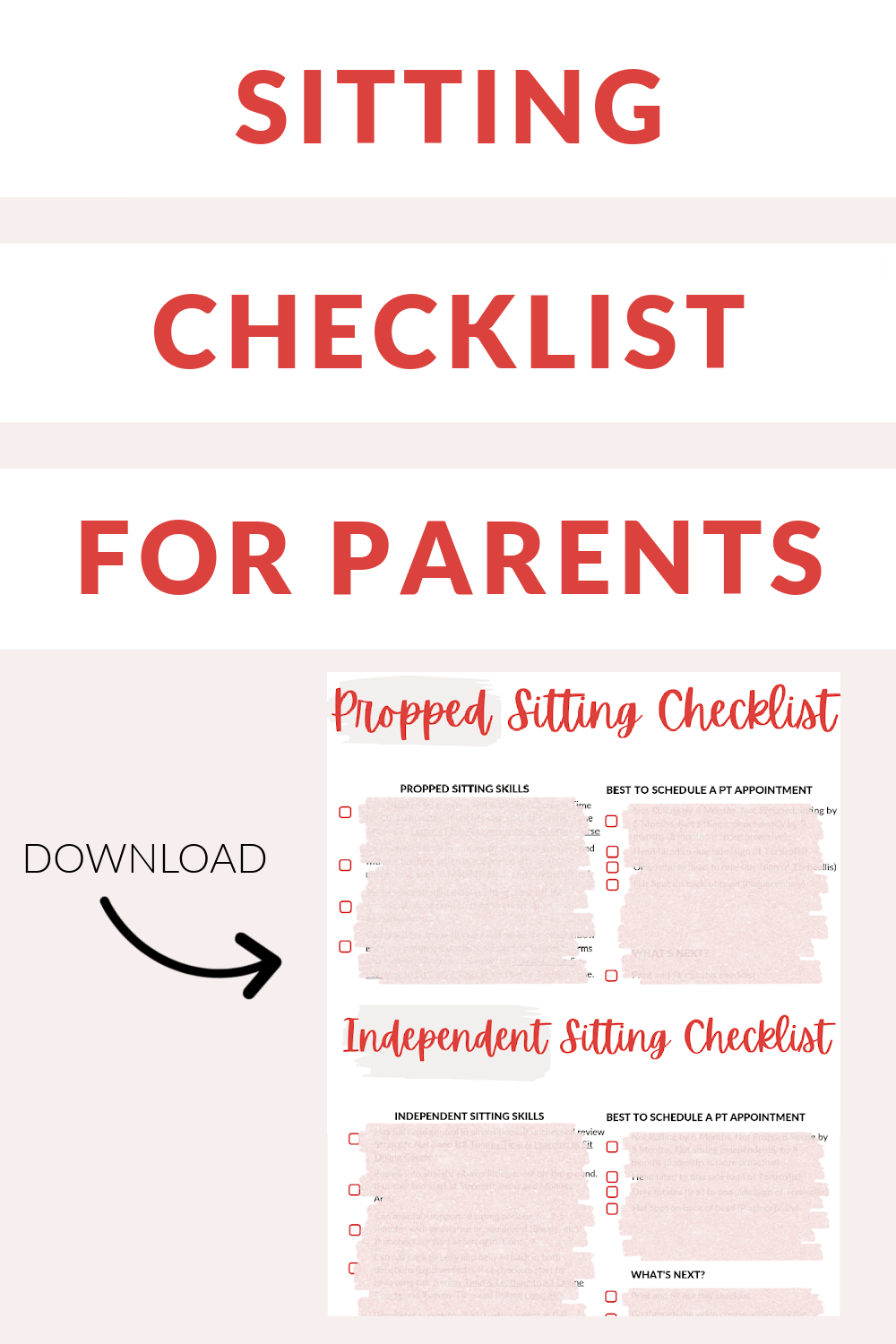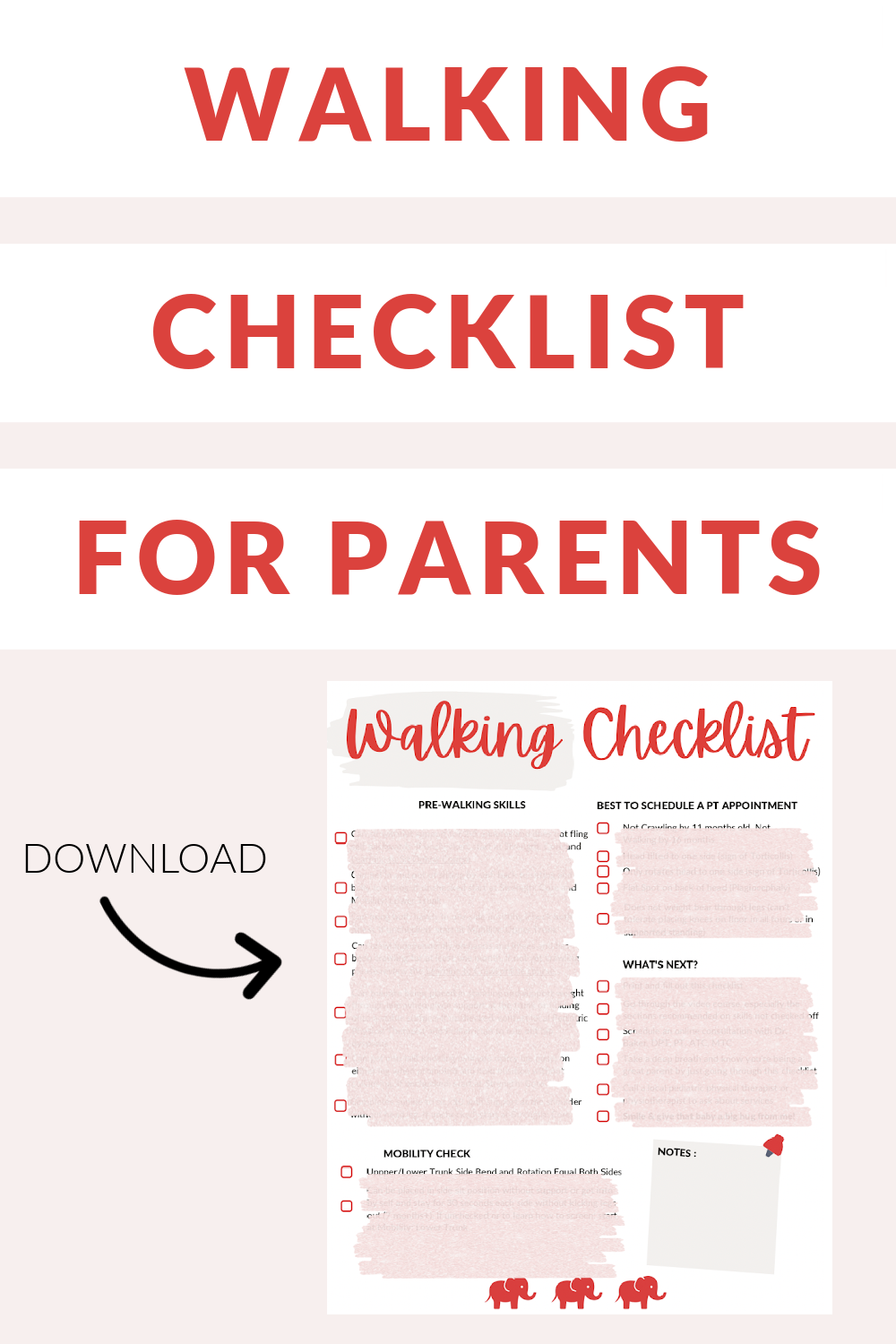Download The Free Learning to Crawl Checklist
Perfect for parents trying to uncover what might be blocking their child from crawling on hands and knees on their own.
Trunk Stretching Exercises For Babies To Help Them With Rolling or Crawling
this blog contains affiliate links
Hi there, proactive parents! I'm Dr. Lauren Baker, your pediatric physical therapy bestie, dedicated to helping proactive parents like you support their babies in moving with confidence and ease.
Today, we're diving into an essential aspect of your baby's development: trunk rotation. Understanding and fostering this ability can significantly enhance your baby's progress towards milestones such as rolling, transitioning in and out of sitting, and even future activities like walking, running, and hopping.
Let's explore why trunk rotation is crucial and share two easy exercises you can do to improve it.
Why Trunk Rotation Matters
Trunk rotation refers to the ability of the top half of your child's body to move separately from the bottom half.
This skill is vital for:
Complex Movements: It enables actions like rolling, which require the upper body to rotate in one direction while the lower body rotates in the opposite direction.
Developmental Milestones: Trunk rotation is foundational for rolling over (both ways!), sitting independently, crawling, and the more complex motions your child will eventually tackle, like jumping and hopping.
Often we need flexibility before we are able to fully utilize the muscles that allow our bodies to move in the ways we want (or need) them to.
The Importance of Stretching in Trunk Rotation
A baby's trunk can move in three main planes:
Side to side — like the “I'm a little teapot” dance
Front and back — how we walk or go up stairs
Rotation — think of sitting in a chair and looking behind you
For functional movements, especially rolling, your baby needs to twist one part of their trunk in one direction while the other part remains in the opposite direction.
Ensuring your baby can move equally well in both directions is crucial for their overall mobility and the development of symmetrical movement patterns aka we need babies to move equally in both directions and the same on each side.
Before we go into the exercise, we need to talk about two methods that can get us to the same destination. Before filming this video I ONLY had heard about traditional stretching, where we bring a body part to feel the stretch, hold it for at least 30 seconds, and then do the opposite side so we’re balanced.
Since this video has been published, I have been additional trained in Total Motion Release Tots or TMR Tots.
TMR uses a different approach to increase motion. It shortens the muscle to relax it, then increases body awareness through bouncing or another option. This ONLY happens on the easy side.
So going forward, you can use either of these exercises by using Traditional Stretching by doing both sides OR TMR approach where you ONLY use one side, the easy side holding for 1-2 minutes, and follow up with 30 seconds to 1 minute of bouncing.
I personally prefer the TMR approach because it feels a little like magic, babies fight it less, relax into it more, and overall I get the best results when using this option.
That being said, traditional stretching is not WRONG – it’s simply a different route to get to the same destination, I just happen to find that the TMR approach has less traffic lights :)
Ideally, regardless of which option you use, you follow up with some tummy time, sidelying play, back play, or rolling/crawling/sitting practice.
For the most comprehensive information, it’s recommended to watch the full video below.
Exercise 1: Stretching Baby's Trunk Rotation on Their Back
This first exercise is designed to improve your baby's trunk rotation while they're lying on their back. It's a gentle way to stretch and promote flexibility.
How to Do It:
Lay your baby on their back.
Gently hold under one of your baby's knees and bring it across their body towards the opposite elbow. Keep your hand resting on their same side shoulder to note when it start to lift off the ground, this shows you when you have taken up all the available range. The baby is now in trunk in rotation.
Repeat on the other side, noting if one side feels tighter or more challenging to stretch than the other. Only go to the baby’s available range and not past.
You can use this position to increase range of motion in the following ways if a baby shows tightness in both directions (both shoulders are off the ground) or one (just one shoulder is off the ground more than the other).
Traditional Stretching: Like it says in the video, you can hold both of these positions for 30 seconds to 2 minutes based on the baby’s attention span and tolerance. This is going to increase range of motion by pulling on the shortened tissue and you might find that the baby resists the “tight” or difficult side. This can be frustrating for parents if a baby kicks out of a position while they are trying to improve their mobility. Always allow babies to move out of positions if they are uncomfortable and never push past the level of resistance present.
TMR Tots Approach: ONLY hold the baby in the easy direction for 1-2 minutes and follow up with 30 seconds to a minute of bouncing. This often gets quicker results (you can always check both directions before/after for a quick bit but only HOLD the EASY side) because the baby is able to easily relax into the easy direction thus allowing the muscles to relax and improves in overall flexibility on both sides.
It often feels a little bit odd when I teach it to parents, but I do really like this approach and use it almost exclusively.
Exercise 2: Holding Position for Trunk Rotation
My favorite exercise doesn't require dedicated time out of your day because it can be incorporated into how you hold your baby as you go about your routine. It's a fantastic way to stretch your baby's trunk rotation while engaging with them.
How to Perform:
Hold your baby with their back against your chest, keeping their trunk steady against your body.
Slide one hand between the FRONT of your baby's legs and then rest your hand on their bottom cheek that is the same side as your arm – if your left arm is holding the baby, your other hand is going to go through the front of their legs and rest your hand on their left buttock or vice versa.
Gently rotate your baby's pelvis by bringing your bottom elbow backwards/behind you to the level of their available range (as far as they easily go and not past). Make sure to keep their shoulders aligned with yours (their chest does not move and they should stay vertical).
The motion at your elbow creates a gentle twist in their trunk by moving their pelvis (think of like how you would twist out a wet wash cloth but instead of horizontal, it’s vertical).Walk around, allowing your baby to see the world from this new perspective. This not only helps with trunk rotation but also provides sensory stimulation.
Traditional Stretching: Like it says in the video, you can hold both of these positions for 30 seconds to 2 minutes based on the baby’s attention span and tolerance. This is going to increase range of motion by pulling on the shortened tissue and you might find that the baby resists the “tight” or difficult side. This can be frustrating for parents if a baby kicks out of a position while they are trying to improve their mobility. Always allow babies to move out of positions if they are uncomfortable and never push past the level of resistance present.
TMR Tots Approach: ONLY hold the baby in the easy direction for 1-2 minutes and follow up with 30 seconds to a minute of bouncing. This often gets quicker results (you can always check both directions before/after for a quick bit but only HOLD the EASY side) because the baby is able to easily relax into the easy direction thus allowing the muscles to relax and improves in overall flexibility on both sides.
**to determine the easy side, use the floor exercise (exercise #1) to determine which shoulder is closest to the ground.
Right shoulder closest to ground = Right Upper Trunk Rotation is Easy = YOUR RIGHT ARM goes around their chest.
Left shoulder closest to ground = LEFT Upper Trunk Rotation is Easy = YOUR LEFT ARM goes around their chest.
TIMESTAMPS:
0:48 what trunk rotation is needed for
1:07 why trunk rotation in babies is important and why they need to stretch in trunk rotation
3:00 exercise 1: how to stretch a baby in trunk rotation on their back
3:53 the easier way to stretch a baby in trunk rotation
4:43 exercise 2 holding position that helps stretch a baby in trunk rotation
6:00 this philosophy is different than traditional stretching and is called TMR (total motion release) for this type of release please see video here: Total Motion Release Technique for more explanations
TOY IDEAS:
Best Toys for Babies Learning to Roll
Best Toys for Babies
PT Approved Equipment/Containers for Babies
Tummy Time Toys
Understanding Trunk Rotation
Why It's Effective: These exercises stretch the upper and lower parts of the trunk in opposite directions, mirroring the essential movement patterns needed for rolling and other developmental milestones.
Why This Matters
Investing a few minutes daily in these simple exercises can make a significant difference in your baby's physical development. Trunk rotation is a cornerstone of movement, and by fostering this skill early on, you're paving the way for your baby to achieve milestones with greater ease and confidence.
Working Together for Your Baby's Best Start
If you've tried these exercises and have questions or if you're seeking more personalized guidance, I'm here for you. Check the pinned comment for a link to book a one-on-one consultation with me or schedule right here. We can dive deeper into your baby's developmental journey, ensuring you have all the tools and knowledge to support their growth every step of the way.
Curious About Learning More on Tummy Time, Rolling, or Both?
The absolute best book for parents on tummy time and rolling is: Tummy Time and Learning to Roll: A Baby Development Book for Ambitious Parents and Pediatric Healthcare Providers to Help Babies Learn to Roll Independently. The book comes with a free online video course to help parents fully understand how to complete the different exercises, printable checklists to know exactly where your baby is at, and when to reach out for additional help.
This book was written by Dr. Lauren Baker, PT, DPT, ATC, MTC, who is a Pediatric Physical Therapist in Boise, Idaho, trained in helping parents learn how to help their babies move and master their milestones. She loves teaching parents how to see how their babies are moving as well as how to influence those movements though play positions and exercises to help babies move with confidence and ease.
Tummy Time and Learning to Roll is the first book in the Proactive Play series written by Pediatric Physical Therapist Dr. Lauren Baker in order to help Ambitious Parents and Pediatric Healthcare Providers learn how to help babies master tummy time and learn to roll. It is meant to help ambitious parents understand baby development from birth to six months (tummy time to rolling).
This book is a mix of easy-to-follow and more in-depth information than is typically found in baby development books because Dr. Baker believes parents deserve to have all the information at their fingertips.
This book breaks down each piece of movement in checklists so that parents know what their babies need for tummy time and rolling. It also covers what areas might limit a child with rolling, why it is so important, and when to seek help from a pediatric PT.
This book comes with colored photos and easy-to-follow demonstration videos that can help parents implement safe, strategic play-based exercises with their babies in 20 minutes per day.
A Great Resource For:
Parents and Pediatric Healthcare Providers of babies 0-6 months
Parents of babies who are struggling with tummy time, rolling back to belly, belly to back, or only to one side
Access to simple, easy-to-follow videos of play positions and exercises
Learning the four pillars of movement needed in order to master rolling
240+ Color Photo Examples of:
Tummy Time, Sidelying, and Back Play
Developmental Toys and Equipment
Hand Placement and Strategic Play Positions
Common Areas of Restriction or Weakness
When To Reach Out For Help
What If You Want Extra Help?
If you have concerns about their movement, remember, you can always reach out to a pediatric physical therapist. It's your right as a parent to advocate for your child's development.
Sometimes, a few tips and tricks are all you need to get your baby moving better. We're here to support you and release those mama worries. If you are looking for in home pediatric physical therapy, check our listing of therapists.
For those eager to learn more or seeking personalized guidance, I offer online video parent consultations internationally which can be scheduled by clicking here. I am dedicated to answering questions and providing tailored play activities for each unique developmental journey.
When Should Babies Receive Pediatric Physical Therapy?
Parents can call and schedule with a Pediatric Physical Therapist at any time, for any concern in all fifty states without a referral from their Pediatrician.
Pediatric Physical Therapy is medically indicated in all babies who are not rolling in all four directions by six months (back to belly over their right arm AND left arm + belly to back over their right arm AND left arm).
Pediatric Physical Therapy is medically indicated if you notice a flat spot on the back of an infants head (possible plagiocephaly), a tilt of their head consistently to one side (ear to shoulder - possible torticollis), or a rotation preference of their neck (consistently look only to the right or left - possible torticollis).
Many Pediatric Physical Therapists including Dr. Baker, can successfully treat flat spots (Plagiocephaly) without a helmet with a combination of therapy and positioning strategies if seen prior to 4 months (0-3 months is ideal). Dr. Baker uses the Baby Begin Method of repositioning.
Flat spots can be due to in-utero positioning, rotational preference (right sided flatness most common) and babies are at an increased risk for flatness if they are male, were breech, multiple birth, premature, have difficulty with tummy time, or are in containers > 2 hr/day.
Final Thoughts
As parents, taking the time to understand and support your baby's development is one of the greatest gifts you can give. Trunk rotation is just one piece of the developmental puzzle, but it's a critical one. By incorporating these simple exercises into your daily routine, you're not only bonding with your baby but also actively contributing to their future success in rolling, crawling, and beyond.
Thank you for joining me on this journey to support your baby's development. Remember, you're doing an incredible job, and I'm here to support you. Stay tuned for more tips and insights to help your baby move with confidence and ease! If you haven’t yet, consider subscribing to the youtube channel for more videos for baby to toddler development.
The 6 Areas A Baby Needs To Master To Learn To Crawl and Exercises To Help
There are 6 things babies need to be able to do in order to learn how to crawl. If a baby is struggling with crawling, it is essential to focus on these six areas to ensure that kiddos who are struggling with crawling have the essential building blocks that children need to master in order to progress toward crawling.
If a child struggles in any or multiple areas, they may not crawl and instead move in less ideal ways such as booty scooting, hitch crawling, or army crawling for longer than one month.
The six areas a baby needs to master are:
1. Upper Trunk Strength
2. Upper Trunk Mobility
3. Lower Trunk Strength
4. Lower Trunk Mobility
5. Core Strength
6. Crawling Specific Motions
If you’re curious about why each of these areas is important, make sure to watch all of the videos linked down below where I explain exactly how each of these exercises can help a child progress to hands and knees crawling.
For Exercises, it's best to focus on at least one exercise per section for the week. I tell the families I work with to focus on 3 exercises or 20 minutes per day with some extra exercises on the weekends or on days when parents find that they have more time.
Each exercise is either 2-5 minutes or about 10 reps, however, it is okay to tailor it to a baby’s specific tolerance and then increase by 2-3 repetitions or 15-30 seconds each day or week as available/tolerated.
*exercise listed in more than one section
Mobility of the Upper Trunk
Mobility of the Lower Trunk
Strengthening of Upper Trunk
Baby Planks (goal 15-30 sec at a time)
Baby Wheelbarrow (goal 3-5 feet without collapsing)
Weight Bearing Through Arms on Elevated Play Surfaces (coming soon)
Strengthening of Lower Trunk
Tall Kneeling / Tall Kneeling on Incline Toy (coming soon)
Pull to Stand at Activity Table / Pull to Stand at Couch or Small Table
Core Strengthening
Supine to Sidelying to Sit (side core muscles)
Supine to Sit (if #1 is too difficult)
Crawling Training
Crawling on hands and knees is a significantly important milestone, maybe even the most important milestone for all around holistic long term development.
Without hands and knees crawling babies miss out on:
Strengthening the hand muscles which can impact hand writing legibility, formation of letters, and control of a pencil
Decreased postural control strengthening of the upper trunk which can impact handwriting
Decreased core strengthening which can impact gross motor skills such as running, jumping, throwing/catching
Decreased Eye movement and coordination which can impact reading / writting / catching a ball
Decreased isolation of head movements from the body, which can impact coordination
Decreased hip strengthening opportunities which can impact progress toward walking independently (especially if mobility is with booty scooting or army crawling ie neither of those result in neutral hip position weight bearing).
If your child is past 11 months and is not yet crawling on hands / knees, schedule a parent consultation or evaluation here.
3 Crawling Exercises For Infants
Here are three crawling exercises for infants or exercises to get your baby crawling.
This post contains affiliate links, please see my disclaimer for more information.
Lauren is the owner of Dr. Lauren Baker In Home Pediatric Physical Therapy and provides paid 60-minute online parent consultations for individuals with additional questions internationally. For scheduling please click here.
This video will teach you:
Three Exercises to help your baby crawl
Why crawling is absolutely necessary and should not be skipped
What a Pediatric PT can do if your baby needs extra help
find what you’re looking for
0:00 introduction
3:11 exercise #1 quadruped rocking
4:15 exercise #2 quadruped reaching
5:36 exercise #3 assisted crawling
7:07 what pediatric physical therapy can do
7:52 crawling playlist - https://www.youtube.com/playlist?list...
transcription coming soon
subscribe to dr. lauren baker on youtube, so you know where you found this video & you can find it again (in case you need it for yourself or to share it with a friend who might benefit from it!).
Leave a comment if you have any questions, it’s my absolute favorite thing to share resources, connect you with what you’re looking for, and give general education.
I have a firm philosophy that everyone deserves a physical therapist best friend & if you don’t have one yet — we can be online besties!
links and additional information
HAVE MORE QUESTIONS? book a 60 minute online consultation with dr. lauren baker, physical therapist
MY BOOKS ON AMAZON:
📚New in 2021 - The Ultimate Guide To Pediatric Physical Therapy Documentation
📚Amazon Best Selling Pediatric Exercise Handbook
📚The Boy and The Boomerang Children’s Book
for parents
PEDIATRIC ONLINE COURSES:
Get Your Munchkin Moving Gross Motor Online Course 6-15 months - $5 OFF with code: drlaurenbaker
for active women (moms & aunts!)
FITNESS:
💪 Free 30 minute home workouts
👋 Workout with me in The Girl Squad
FITNESS PODCAST:
🎙Decrease your resistance to fitness the podcast
MY FAVORITE THINGS:
🏋️♀️ Shop my home gym equipment
⚡ Must have injury prevention equipment
for physical therapists / student physical therapists
💻 Start Your Own Cash Based Mobile Pediatric Business with Simple Practice (EMR, Scheduling, Payment)
🧭 Learn How To Create An Online Course & Host It For Free For Life ($50/mo savings)
other fun things
LEARN WITH ME:
📘Read lots & lots of books using a kindle unlimited subscription here
CONNECT OFF YOUTUBE:
🖱️ My pediatric website / blog
👩⚕️Find a PT
DISCLAIMERS: The information provided on this site is intended for your general knowledge only and is not a substitute for professional medical advice or treatment for specific medical conditions. You should not use this information to diagnose or treat a health problem or disease without consulting with a qualified healthcare provider. Please consult your healthcare provider with any questions or concerns you may have regarding your condition. By watching this video you release Dr. Lauren Baker, PT, DPT, ATC, MTC and all related parties from any and all liability. *As an Amazon Associate I earn from qualifying purchases. The links listed above are 99% affiliate links (amazon or other programs), which means I earn from qualifying purchases at no extra cost to you.
Music from intro courtesy of: Campfire by Scandinavianz https://soundcloud.com/scandinavianz Creative Commons — Attribution 3.0 Unported — CC BY 3.0 Free Download / Stream: https://bit.ly/_campfire Music promoted by Audio Library https://youtu.be/9Rfykh-YzCc


